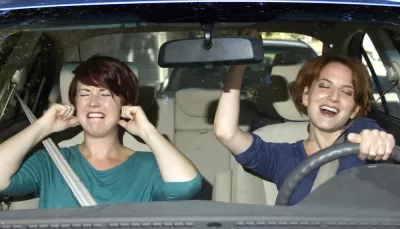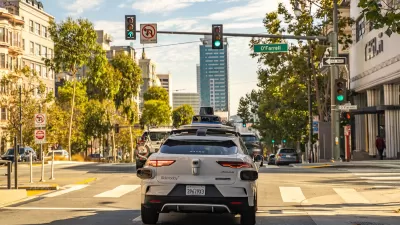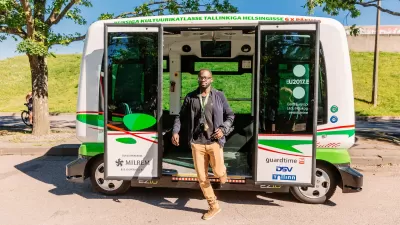There is a growing movement of humans who don't like the idea of being forced to hand the wheel over to robot drivers.

M.R. O'Connor introduces the world to an event called Radwood, an event that gathers vehicles from the pre-digital-technology years before 2000, and the Human Driving Association, "an organization aiming to protect people’s freedom of movement and right to drive their own cars."
The H.D.A. imagines a future in which, for safety reasons, human driving is made illegal. To prevent this scenario from coming to pass, it advocates laws requiring carmakers to include a steering wheel in every vehicle; it also argues that every future car should be fully drivable under hundred-per-cent human control. For members of the H.D.A., events like Radwood aren’t purely nostalgic. They’re an expression of resistance. They believe that, in a world of level-five autonomous vehicles, driving a 1991 Volvo GL could become a radical political act. It might make you an outlaw.
Along the way, O'Connor attends Radwood, introduces readers to the founder of HDA, and links to some of the reading materials that help build an understanding of the foundational ethos of the HAD crowd. HAD founder Alex Roy wrote a manifesto, for instance, in response to a manifesto written by the CEO of Zipcar.
Among the central tenants of Roy's writing is the idea that the media and the public are too quickly buying the idea that the future will be autonomous, to which we reply: not so fast.
- Study: Self-Driving Cars Have Trouble Detecting People of Color
- Study: Self Driving Cars Could Worsen Congestion and Inequality
- Watch a Self-Driving Car Take Out an Autonomous Robot
- 2018 in Review: A Rough Year for Self-Driving Cars
- Peter Calthorpe's Self-Driving Car Dissent
- Rebecca Solnit: Public Transit Is Greater Than Self-Driving Cars
FULL STORY: The Fight for the Right to Drive

Maui's Vacation Rental Debate Turns Ugly
Verbal attacks, misinformation campaigns and fistfights plague a high-stakes debate to convert thousands of vacation rentals into long-term housing.

Planetizen Federal Action Tracker
A weekly monitor of how Trump’s orders and actions are impacting planners and planning in America.

In Urban Planning, AI Prompting Could be the New Design Thinking
Creativity has long been key to great urban design. What if we see AI as our new creative partner?

King County Supportive Housing Program Offers Hope for Unhoused Residents
The county is taking a ‘Housing First’ approach that prioritizes getting people into housing, then offering wraparound supportive services.

Researchers Use AI to Get Clearer Picture of US Housing
Analysts are using artificial intelligence to supercharge their research by allowing them to comb through data faster. Though these AI tools can be error prone, they save time and housing researchers are optimistic about the future.

Making Shared Micromobility More Inclusive
Cities and shared mobility system operators can do more to include people with disabilities in planning and operations, per a new report.
Urban Design for Planners 1: Software Tools
This six-course series explores essential urban design concepts using open source software and equips planners with the tools they need to participate fully in the urban design process.
Planning for Universal Design
Learn the tools for implementing Universal Design in planning regulations.
planning NEXT
Appalachian Highlands Housing Partners
Mpact (founded as Rail~Volution)
City of Camden Redevelopment Agency
City of Astoria
City of Portland
City of Laramie





























